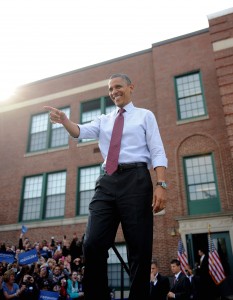Obama Administration Brings Bright Future for America’s Youth
November 8, 2012

Efficacy among youth is difficult to maintain when most of the student population cannot vote. So, it is important to note the main reasons why the recent Presidential election affects school-age children’s present and future.
First, President Re-elect Obama is planning to bring progress and reform to students’ pathway to college. The administration is planning on setting higher standards for improved test scores as well as teacher training and retention programs. Also, he recently passed the American Jobs Act, which in part purposed $30 billion to modernizing schools, making them better fit to raise a generation prepared for college and life after. (whitehouse.gov)
In addition, Obama has restructured the No Child Left Behind Act s to allow flexibility, the prior law would otherwise punish states that did not meet standards, through his Blueprint for Reform of Elementary and Secondary School Education Act (ESEA). This, in addition to the Obama administration’s Race to the Top incentive program a�� which invested $400 million into the education system this year a�� displays Obama’s wealth of effort in raising the caliber of U.S. public education.
However, where the newly re-elected President is truly bringing change to is to prospective college students. During his first term, he had already doubled the administration’s investment in Pell grants for student aid in paying college tuition. Now, the Obama administration is trying to reform collegiate student aid through their proposed “Pay as You Earn” plan.
Originally aimed for establishment in 2014, the student loan payment plan is being pushed forward to by the Obama administration to go into effect next year. The payment plan caps student’s loan payments at 10% of their income, and forgives the remaining balance due for the loan after 20 years of payment. (studentaid.edu.gov)
This is fantastic news for entering undergraduates, as their repayment debt per month will decrease to more manageable amounts. This can give students who are choosing colleges based on monetary factors more options, as they will have less pressure to pay back their loans.
As the economy recovers and the job market regains stability, the Obama administration’s education reform is giving a helping hand for introducing a newly prepared workforce into the U.S. labor pool. Students need have no fears: their government is investing millions in making sure their future is a brighter one.



